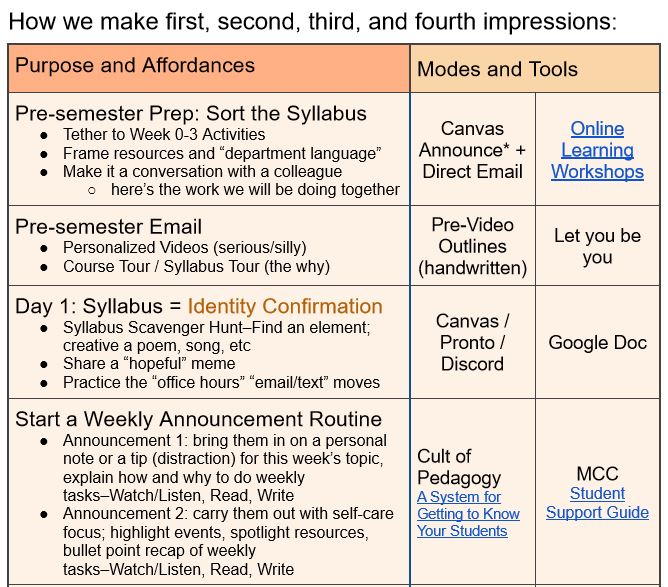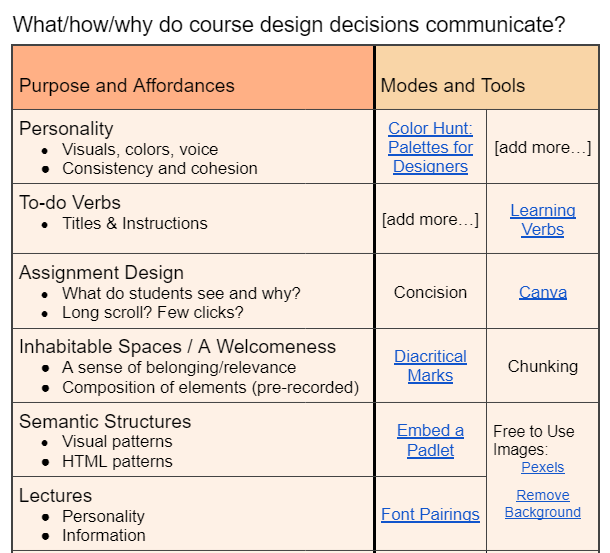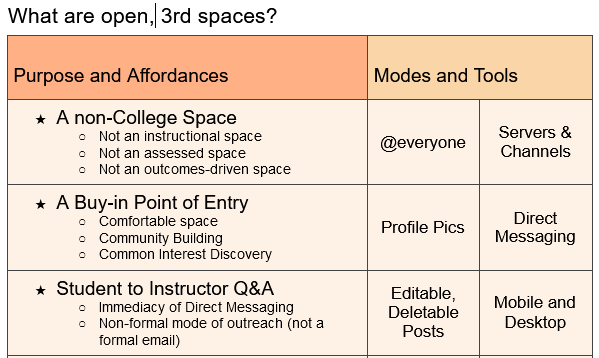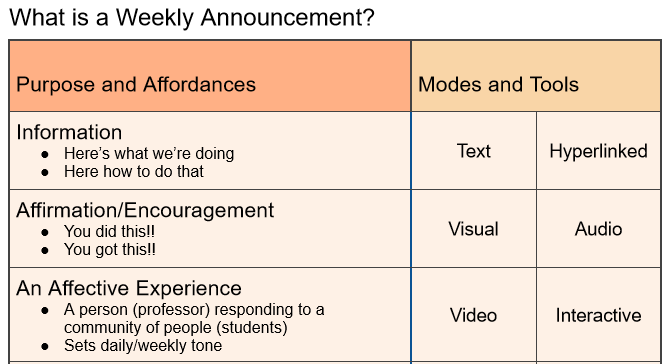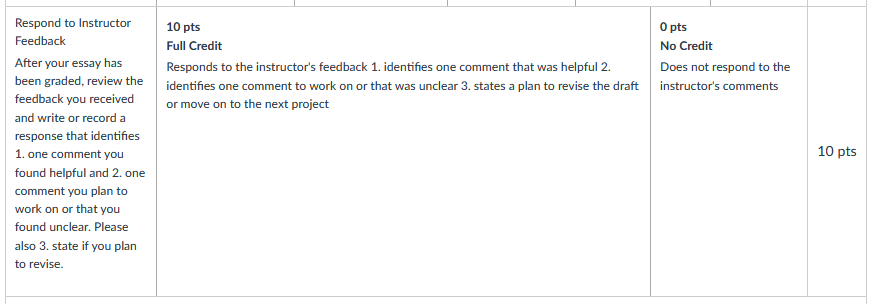At the end of Week 2, as I finalize my rosters and settle into the emerging rhythms of another weird but promising semester, I’m thinking about how an asynchronous, classroom culture is forming and what I and my students are doing to shape it.
I’ve spent much of my time this week communicating with students. I’m messaging students who have missed a routine deadline or an important assignment with a quick, “Hey Susana. Did you intend to submit this assignment? Would you reply to this comment or email me to chat about how the class is going?” I’m using Canvas’ Rubric tool to grade early assignments quickly. I like to change the title of that 0 column from “No Marks” to “Please Resubmit” and sometimes “Please Email curry.” That way, there’s an invitation to a positive action communicated along with that low grade.
I’m also taking 15 minutes per class to identify student generated content from the week to showcase in my next Weekly Announcement. I’ve created
an equity-minded roster that lets me promote students who are already showing signs of feeling overwhelmed or who may seem intimidated by writing or whom I identify as a student in a disproportionately impacted group. I begin the announcement celebrating an idea, a phrase, a structure, or connection to what we’re studying to honor that student’s knowledge and language and value their contributions. I keep a record of students whose work I have not yet promoted, so by mid-semester, everyone gets that spotlight.
Many of us do these sorts of things already; here’s a few great ideas from
Mary,
Chad, and
Jade! These early interventions help us to cultivate a class culture and establish the routines we and our students will respond to going forward. Below are a few ideas to consider, and if you would like,
please share more tips and tricks here.
Assignments You Value = Assignments Your Students Value
We all have certain assignments and policies that we tell students are important, and then we have certain assignments and policies that we show students are important. This is the week when students start to realize what they need to prioritize and what they can let slide based on what we grade, call out, ignore, put off, and simply forget. So which assignment or policy has the greatest potential value to your student writers and readers? What can you do at the beginning of next week to show students this value?
Policies
- Meeting deadlines
- Resubmitting revised work
- Visiting office hours
- Seeking Campus Resources
Assignments
- Low-stakes Reading Responses/Quizes
- Discussion Posts and Replies
- Active Participation in Zoom
- Essay Drafts
- Metacognitive Reflections
Spotlight Student Work
We know the most powerful ways we can increase retention is to foster real, meaningful connections with our students. We have the chance this week and next to do that proactively and with equity. Who in your class right now could use a boost? For whom would a simple positive message or shout-out of their work make the difference? We know there is something to celebrate in every students’ work–an idea, a phrase, a structure, a reflection, a triumph. Let’s get into a routine for doing that this week and next.
- Shout-out students by name or by their work in your weekly announcements
- Start Zooms session with “What’s Great from Last Week”
- Integrate student generated content into your assignments and instruction
Turn Around Time
Quick, encouraging communication with students this week and next can be the thing that alerts them to take action within their abilities to meet your expectations and succeed in your assignments. We all want to provide comprehensive, formative feedback, but maybe what students need this week and next is a simple encouraging check-in. How can we be more efficient and timely in our communication with individual students?
